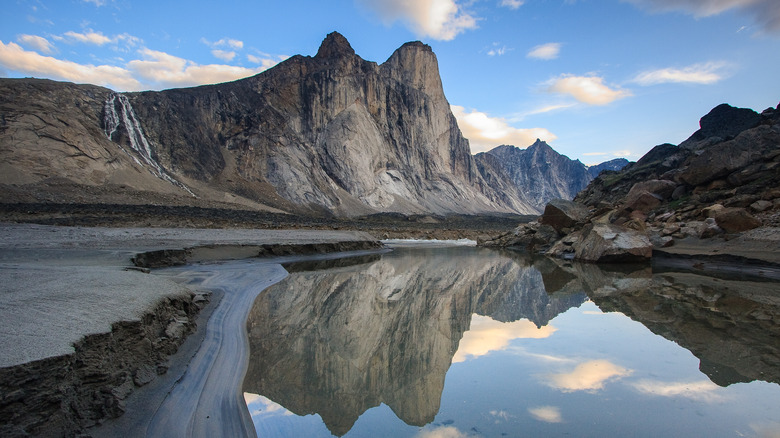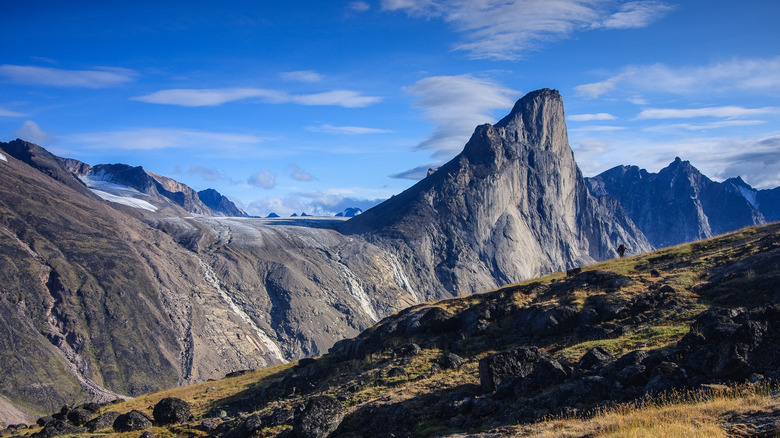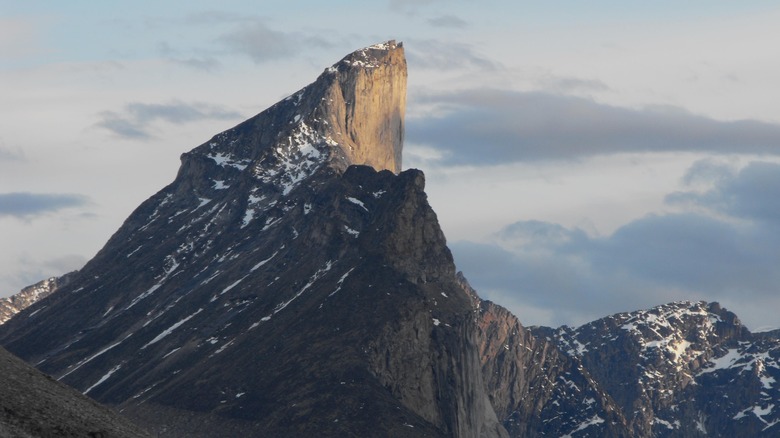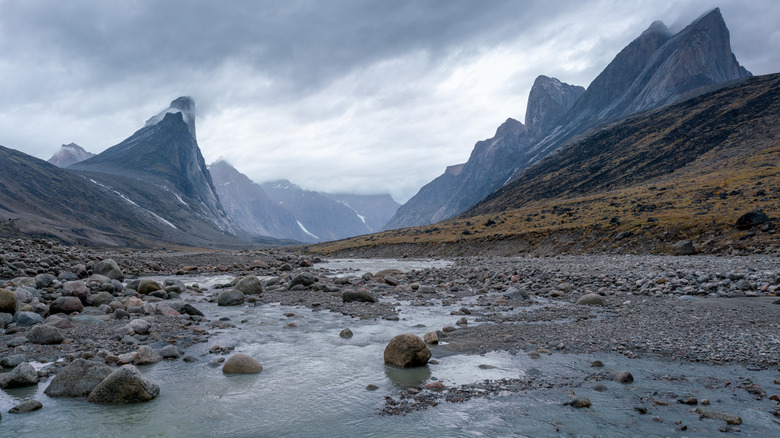Why It's A Massive Challenge To Conquer Canada's Mount Thor
Why do climbers do what they do? Is it for the publicity, the thrill of pushing their bodies to the extreme, the sheer rush of achieving a seemingly insurmountable goal? All of these things often play a factor, but there's something more primal at play too. Looking out across the peak of a mountain, with the sheer majesty of nature unfolding before you, is a priceless experience. It's reason enough in and of itself.
Heather Geluk, per Emily Luxton Travels, is an accomplished mountaineer who has scaled Kilimanjaro and Mount Everest, among others. In an interview with the outlet, she summarized her reason for taking on these perilous excursions, and they surely resonate with many. "Being outside in the fresh air," Geluk said, "and surrounded by soaring mountain faces – be they Himalayan peaks, the Rockies, the Andes or the Alps – is where I find myself filled with awe and inspiration."
Mount Everest and Kilimanjaro are among the world's most iconic and formidable prospects for any climber. As Live Science reports, the former is the tallest mountain above sea level on the planet. Over in Canada, meanwhile, waits Mount Thor, which is, in its way, perhaps even more imposing. Here's why.
To complete verticality, and beyond
Baffin Island's Auyuittuq National Park, per Conde Nast Traveler, is home to some of the most remote, beautiful, and challenging natural wonders on the planet. Mount Thor is one of those imposing peaks.
Several factors combine to make Mount Thor treacherous. The first of these, according to Atlas Obscura, is its elevation of 5,495 feet (or 1,675 meters). It's a height not to be sniffed at, for certain, but the truly horrifying element of Mount Thor is just how steep it is. 4,101 feet of that drop is purely vertical, the longest and most nerve-jangling drop of its kind on Earth. At a reported average angle of 105 degrees, Atlas Obscura goes on, it's even steeper than purely vertical.
For the majority of people, the sheer numbers involved here would be more than enough to dissuade any heroics and/or thrill-seeking on and around Mount Thor. For some, however, a potentially life-endangering prospect is a tempting one, which is why paragliding from Mount Thor was made illegal.
Many failed attempts were made to scale the face of Mount Thor
As Rock And Ice magazine reported in August 2012, the cliff offers a range of other unique challenges too. At the time, John Furneaux and Bill Borger had climbed a new route to the summit of Mount Thor, up the southwest of the cliff. The route was deemed The Great Escape, and their triumph certainly lived up to the name when they struggled to access any water. "The 70- to 100-degree inclines of Thor meant water deposits were few and far between," Furneaux said, demonstrating that even seasoned climbers who prepare supplies and back-ups can struggle to conquer Mount Thor.
The Daily Mail reports that 30 different expeditions were mounted to conquer Thor's west face, all of them ending in failure. It wasn't until 1985 that the feat was accomplished. In their efforts, it seems, the small four-person climbing team clung to every little advantage they could in order to prevail.
The dangers the successful climbers of Mount Thor faced
Eric Brand wrote of the struggle he and his fellows faced in "Mount Thor: Direct West Face" (via the American Alpine Club). Earl Redfern, John Bagley and Tom Bepler climbed with Brand, he explained, adding that the May/June time period they chose for the task meant that they could "transport [their] gear by native Inuit packers on snowmobiles and to avoid the fierce winds that rake the area in July and August."
"Previous attempts on Mount Thor's west face had ended at the base of the headwall," Brand reported, recounting previous tragic attempts. 1979 and 1984 saw two expeditions from Japan retreat after climbers' deaths, one being killed when attempting to cross a body of water. Also in 1979, Brand wrote, "after 32 days on the face, three American climbers were driven from the wall by winds in excess of 100 miles per hour."
In short, it's abundantly clear that Mount Thor brings to bear the full fury of nature on hopeful climbers, from wind to water and its own nigh-impossible steepness.



